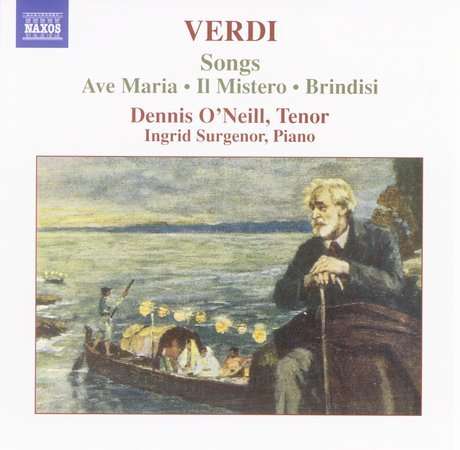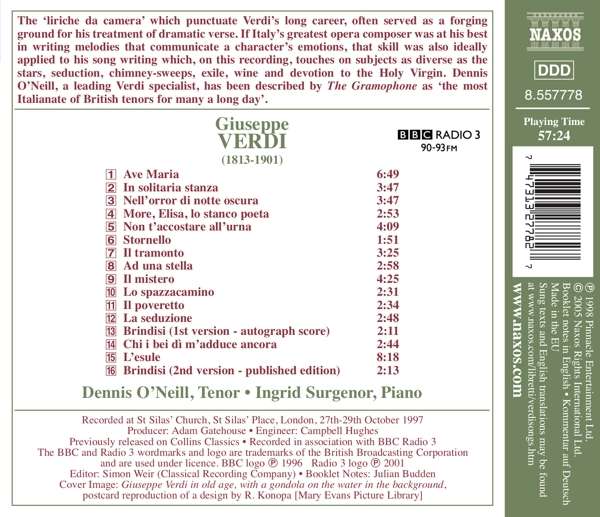
kompozytor
Verdi, Giuseppe
tytuł
VERDI: Songs
wykonawcy
Surgenor, Ingrid;
O'Neill, Dennis
O'Neill, Dennis
nr katalogowy
8.557778
opis
It may seem odd that Italy’s greatest opera composer should have first come before the Milanese public with a set of salon pieces, but in fact the ‘liriche da camera’ which punctuate his long career would often serve as a forging ground for his treatment of dramatic verse. He was 25 and pursuing the humble calling of municipal music master in Busseto when, doubtless as a result of useful contacts made during his student years at Milan, the firm of Canti brought out his Sei Romanze for voice and piano. Within their modest scope fingerprints of the mature master can already be discerned. The heavily charged harmonies that introduce Non t’accostare all’urna 5 set a mood of high tragedy, while at midpoint the lyrical flow gives way to forceful declamatory gestures and a convulsive urgency as the singer inveighs against his faithless beloved.
nośnik
CD
gatunek
Muzyka klasyczna
producent
Naxos
data wydania
03-10-2005
EAN / kod kreskowy
747313277827

(Produkt nie został jeszcze oceniony)
cena 58,00 zł
lubProdukt dostepny w niewielkiej ilości.
Wysyłka w ciągu 3 dni roboczych
Darmowa wysyłka dla zamówień powyżej 300 zł!
Darmowy kurier dla zamówień powyżej 500 zł!
sprawdź koszty wysyłki































